
SITF Submissions and Findings
The Species Identification Task Force receives submissions from orchid judging centers or exhibitors.
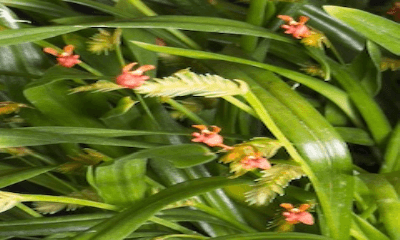
Stichorkis gibbosa 'Orange Benny' CBR-2024-05-03
Microchilus-argenteus-2024-04-24
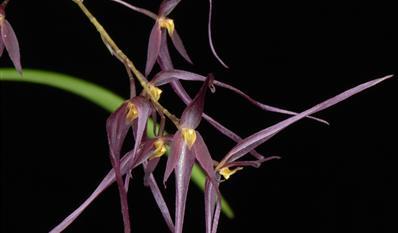
Pleurothallis-tenuisepala-2024-04-23
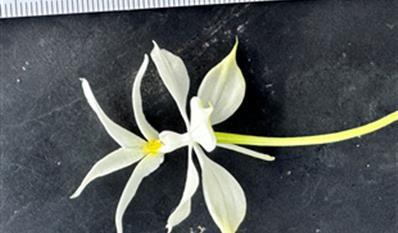
Calanthe-judithiae-2024-04-21
Finding
The flower of Calanthe judithiae does not match the form of the lip of this plant. This plant is an exact match to the 2020 AOS awarded Calanthe leonidii, #20204471/CHM. The flower form and color, including the golden yellow protuberances at the base of the lip, matches this plant, as does the flower size given in the IOSPE description. This plant also matches the photos found in the Vietnamese article: http:/hoalanvietnam.org/6B2_lv/3hk/Kieu-Lan-leonidii.pdf .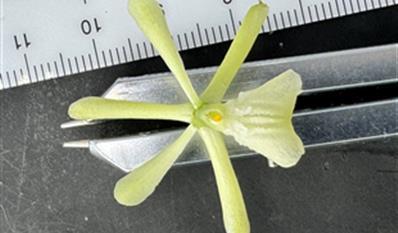
Epidendrum-bennetti-2024-04-20
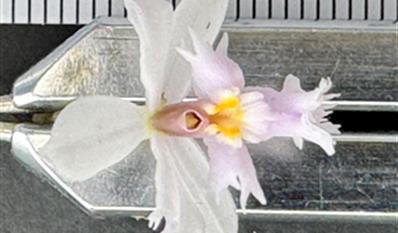
Epidendrum-blepharistes-2024-04-20
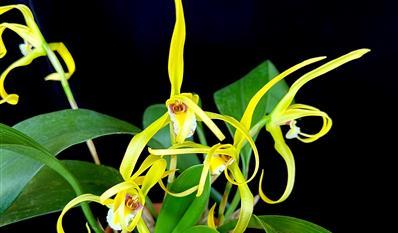
Maxillaria-embreei-2024-04-20
Conchidium-dickasonii-2024-04-18
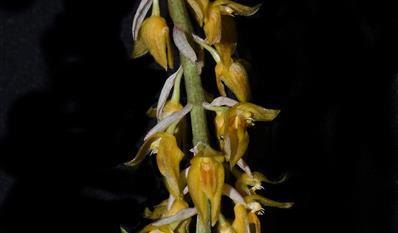
Bulbophyllum-sterile-2024-04-09
Finding
The petals of B. sterile are broadly triangular, as are these and the trilobed lip has the cleft middle lobe and two acute lobes that are visible in this flower. The pseudobulbs on this plant match the description in the "Flowers of India" website as conical-ovoid, faintly four-angled; there is also a photo matching this plant in the "Flowers of India" and matching photos of B. sterile in the "eFlora of India" website. This flower closely matches the photo of B. sterile (as B. neilgherrense) in the IOSPE and Seidenfaden & Smitinand's 1959, "The Orchids of Thailand" stated that B. sterile can be distinguished by its distinctive membraneous bracts, reddish-brown stripes in the sepals, acute triangular lateral sepals, acute and short vertical horns on the column and the lip with basal auricles.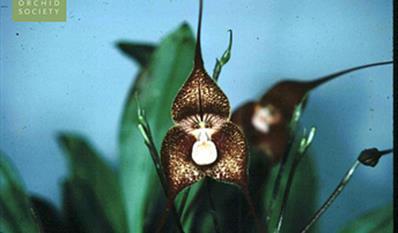
Dracula-wallisii-Challenge-2024-04-07
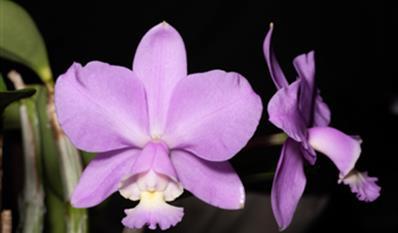
Cattleya-loddigesii-2024-04-01
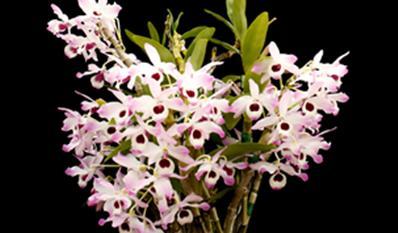
Dendrobium-lituiflorum-2024-03-31
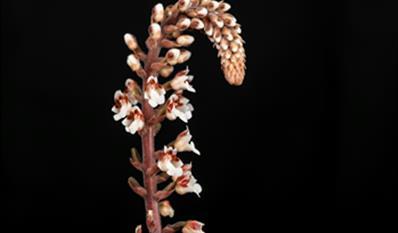
Dossinia-marmorata-(Dayii-type)-2024-03-29
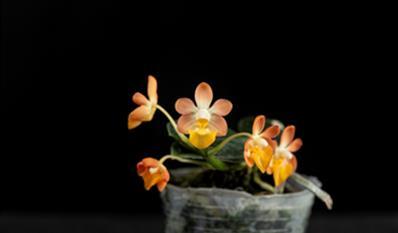
Phalaenopsis-lobbii-(labeled-Pink)-AM/AOS-2024-03-29
Cattleya-forbesii-fma-alba-2024-03-26
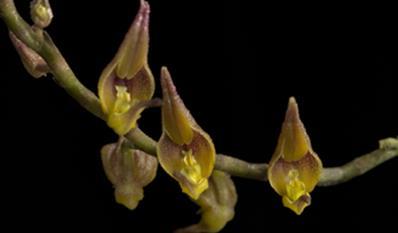
Scaphosepalum-pulvinare-2024-03-24
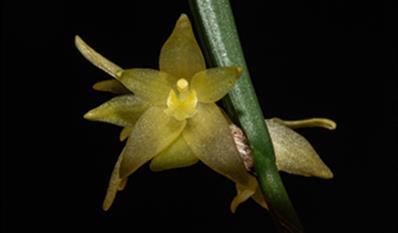
Octomeria-linearifolia-Bryon-CBR-2024-03-24
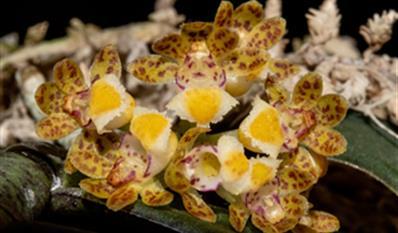
Gastrochilus-minutiflorus-Bryon-CBR-2024-03-24
Bulb-sicyobulbon-2024-03-20
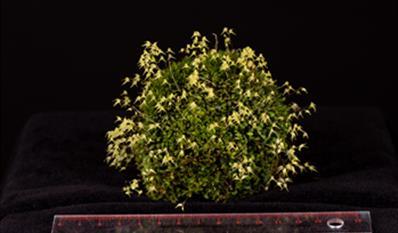
Specklinia morganii-CBR,-CCM-2024-03-17
Paph-exul-f-aureum-2024-03-16
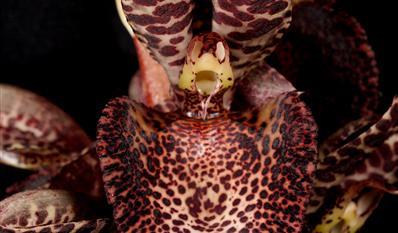
Catasetum-ivaneae-2024-03-14
Finding
This plant is an excellent match to the photo of Ctsm. ivaneae in the article by Fred Clarke in the 2020 Supplement to the AOS "Orchids" magazine. The same photo appears in the OW and some photos in orchidroots.com are similar. The species is very distinctive in the genus and is endemic to Brazil (Amazonas, Rondonia). It was very recently described in 2016 in Orquidario Vol. 30.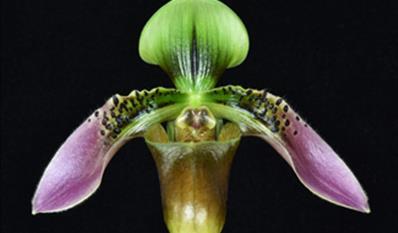
Paph-appletonianum-2024-03-12
Finding
This plant matches the description of Paph. appletonianum var. cerveranum. P. appletonianum var. appletonianum has a staminode that is a classically shaped inverted horseshoe; P. appletonium var. cerceranum has a staminode which is shallower, a little more broadly shaped with a sharply pointed extension in the middle on the bottom. It is very similar to P. appletonium var. cerveranum, Award #20243709, which was previously confirmed by SITF. Variety cerveranum is a validly published subspecies of P. appletonianum.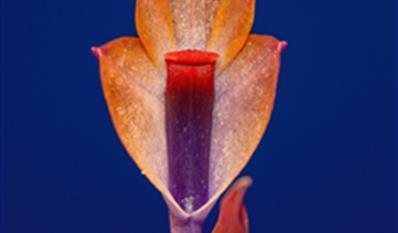
Dendrobium-vexillarius-Purple-Flame-CHM/AOS-2024-03-12
Finding
A key discriminator for D. vexillarius is the three-winged ovary that can be clearly seen in this plant. The award description indicates this plant is an intervarietal cross between var. microblepharum and var. retroflexum; therefore it is confirmed without a subspecies designation; however, this plant does display the color form of var. microblepharum. This plant closely matches the photo by Ed de Vogel and the Orchids of New Guinea website as shown in the IOSPE.Schomburkia-rosea-2024-02-29
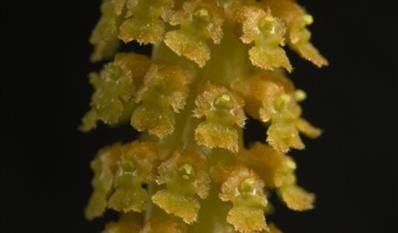
Oberonia-maxima-2024-02-27
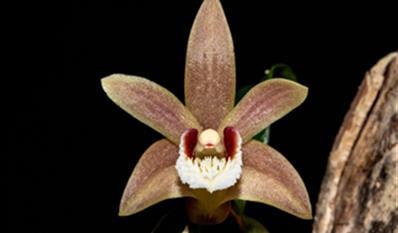
Eria-rhomboidalis-Bryon-CBR-2024-02-25
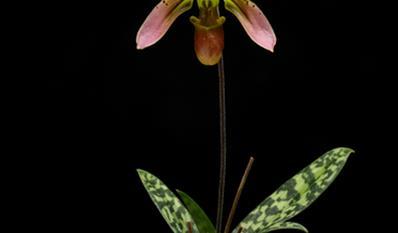
Paphiopedilum-robinsonianum-2024-02-19
Finding
Paph. robinsonianum belongs to a group of species that includes Paph. volonteanum and has a unique fluted staminode dorsal surface that does not look like this flower. The illustration and photo of Paph. robinsonianum also show the staminode overtop of the infolds of the pouch, not behind. The staminode of this plant matches Paph. appletonianum, as does the nobby structure and markings on the infolds of the pouch. Several photos of Paph. appletonianum var. cerveranum shown in the orchidroots.com and the image of a dried specimen in Kew's POWO is a close match to this flower. Kew considers P. appletonianum var. cerveranum to be synonymous with P. appletonianum; however, it is a validly published taxon in the Orchid Atlas in 2007.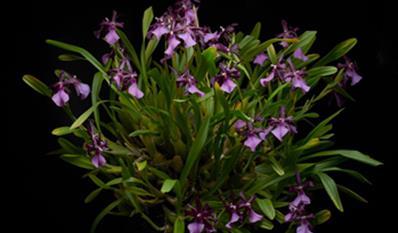
Miltonia-moreliana-Robert-C-CCM/AOS---CHALLENGE-2024-02-11
Finding
The original descriptions of M. spectabilis and M. moreliana (as var. moreliana) state unifloral inflorescences. There are publications and descriptions that indicate occasional two-flowered inflorescences, but never plants that consistently carry two, let alone three flowers. This plant appears to be a classic M. Anne Warne type hybrid. Flowers of M. Anne Warne are almost indistinguishable from M. spectabilis, but two to three flowered inflorescences is the norm for a well-grown M. Anne Warne. This flower's lip has an obtuse raised line in the middle crest of the three central keels, which is "M. clowesii-like", whereas the middle crest in M. moreliana ends in a noticeable knob-like structure. There is an awarded M. Anne Warne with three flowers on every inflorescence and another that had over half three-flowered inflorescences.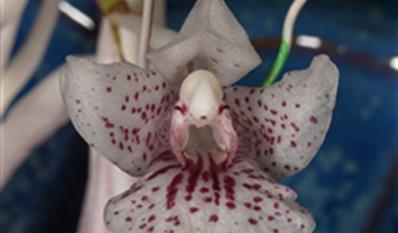
Rodriguezia-dodsoniana-CBR/AOS-2024-02-01
Finding
This plant matches two images of R. dodsoniana in orchidroots.com, both from Ecuagenera; this plant was also obtained from Ecuagenera. The species was named by H. Medina at Ecuagenera and is endemic to Ecuador. The flower size is in range and the color and markings match the species. The description of R. dodsoniana was published in the"Orchids" magazine 88(3):229-231.
FREE ACCESS: Orchid DealWire
Get notified when orchid vendors have special promotions and exclusive savings.


